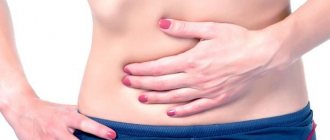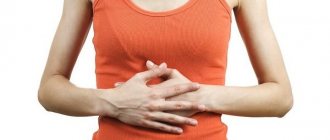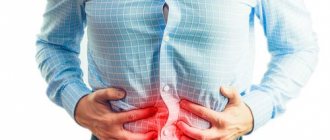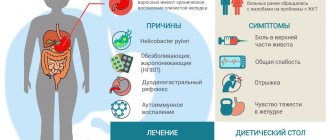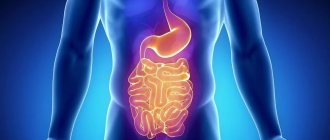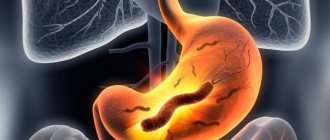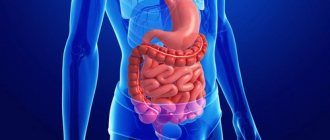A large number of people suffer from inflammation of the stomach, which is also called gastritis. Often this disease does not last too long, since the mucous membrane of the organ is able to recover, leading the person to a speedy recovery. Pathology can have an acute and chronic form. If inflammation of the stomach occurs together with other infectious diseases, gastritis takes on an acute form, in which the epithelium of the stomach is affected. Research for such a disease cannot always be carried out on time. Let's look at what gastritis is, symptoms and treatment. The diet prescribed for this pathology will also be considered.
What causes gastritis?
The inflammatory process of the stomach occurs when its mucous membrane is damaged, and this depends on the following reasons:
- consumption of low-quality products, eating disorders, eating hastily;
- bad teeth;
- lack of protein and vitamins, due to which the production of gastric secretions is significantly reduced;
- bad habits;
- long-term medication use;
- diseases of the gastrointestinal tract;
- disturbance of intestinal microflora, exposure to pathogenic microorganisms and viruses.
But the main cause of gastritis is the bacterium Helicobacter pylori, which is found in 85% of registered cases. Also, the appearance of pathology is caused by a disruption of the normal functions of the human immune system, as a result of which the body begins to produce substances that cause damage to the stomach. This autoimmune form of gastritis is characterized by a low hemoglobin content in the blood.
Folk remedies
If the disease is at an initial stage without exacerbations, it is not necessary to immediately resort to drug therapy; you can improve the condition of the stomach with the help of folk recipes without chemical impurities. However, in order not to cause harm, you need to know exactly how to treat gastritis at home and what products to use. There are many recipes, but they do not suit absolutely everyone. Some of the most popular products are honey, potatoes, and herbal infusions.
Honey
This healthy product contains a large amount of beneficial nutrients and vitamins that have a beneficial effect on the human body. Honey helps normalize the secretion of gastric juice and its acidity level. To achieve a therapeutic effect, it is important to use it correctly to treat the disease. For example, it could be a honey-water solution, for which you need to mix a spoonful of honey with 1 liter of water. Take warm 4 times a day, in the morning - on an empty stomach.
Potato juice
Another useful recipe with which you can both get rid of gastritis and relieve pain in the stomach without pills is to drink potato juice. Only freshly squeezed juice is effective for gastritis. To prepare it, you need to take 2 large potatoes, peel them, and grate them on a fine grater. Squeeze the juice through a fine sieve or cheesecloth. Take 2 times a day - on an empty stomach in the morning and in the evening before bed.
Herbal decoctions
The most common home treatment method is herbal infusion recipes. Herbal medicine helps to permanently cure many diseases of the gastrointestinal tract and normalize the acidity level of gastric juice. An effective remedy is a decoction of marigolds, St. John's wort and yarrow flowers. To prepare it, you need to take 1 tablespoon of dried flowers, pour 1 liter of boiling water over them, cool, strain through cheesecloth. Drink 250 ml of decoction in the morning and evening.
Symptoms of the acute form of the disease
Acute inflammation of the stomach always occurs unexpectedly, and leads to damage to the body by the bacterium Helicobacter pylori, as well as overeating, consumption of harmful foods, allergies to certain foods, and nervous disorders. Pathology of this form manifests itself as follows:
- heat;
- unpleasant belching, which is accompanied by halitosis;
- vomiting of undigested food, often mixed with blood;
- headache and severe dizziness;
- pain in the epigastrium;
- heaviness in the stomach;
- a white coating forms on the tongue;
- excessive salivation or excessive dryness;
- diarrhea, constipation, flatulence;
- weakness, loss of appetite.
List of common gastrointestinal diseases
- Various types of gastritis.
Diagnosed in every third patient. Characterized by inflammation of the gastric mucosa. The main cause of the pathological process is the activation of the bacterium Helicobacter pylori. Provoking factors include consumption of alcoholic beverages, smoking, stressful situations, and poor nutrition. Colitis.
The disease of the gastrointestinal tract is inflammatory in nature. Localized in the small intestine. The cause of the pathology is considered to be bacterial infections. The development of the disease can be provoked by pathogenic microbes in the form of staphylococci, Escherichia coli, Proteus, and streptococci.
Nonspecific ulcerative colitis affects the intestinal canal and leads to the formation of ulcers. In the absence of timely treatment, the patient develops complications in the form of internal bleeding, intestinal obstruction, peritonitis, and malignant formations. Viral hepatitis.
A group of gastrointestinal diseases that are infectious in nature. They are dangerous to the life of a sick person. Characterized by liver damage by viruses. Cirrhosis of the liver.
Chronic type of liver disease. Considered dangerous. If left untreated, it leads to death.
Ulcerative lesions of the stomach and small intestine.
The cause of the disease is chronic gastritis, prolonged activity of Helicobacter pylori. When the organs of the digestive system are damaged, there is a violation of the integrity of tissue structures. Gradually, erosions and ulcers form.
If left untreated, it leads to the development of complications that are life-threatening.
Dysbacteriosis. It is not an independent disease. Characterized by changes in microflora in the intestines. The cause is long-term use of antibiotics, poor diet, and poisoning. Accompanied by stool disturbances in the form of diarrhea or constipation. It is enough to follow a diet, consume fermented milk products and preparations with probiotics. Cholecystitis. The disease is inflammatory in nature. The gallbladder is affected. The main symptoms include pain on the right side, bitterness in the mouth, nausea, disruption of bowel movements, and dyspeptic disorders. Pancreatitis. An inflammatory process that occurs in the pancreas. The pathology is characterized by impaired enzyme production. This phenomenon leads to the manifestation of pain on the left side. Nausea and vomiting are also observed. Haemorrhoids. This type of disease is usually understood as an increase in hemorrhoids. The cause of this problem is a sedentary lifestyle, carrying heavy objects, difficult childbirth, and intra-abdominal pressure. The nodes can be located both inside the rectum and in the anal area. In the initial stages it is treated with conservative methods. In advanced cases, surgery is performed. Appendicitis. An acute inflammatory process that leads to damage to the vermiform appendix of the cecum. Most often it manifests itself as severe pain on the right side. It all starts from the navel area, then gradually the discomfort moves to the lower abdomen. The patient has a fever, nausea and repeated vomiting. In such cases, urgent surgical intervention is required.
Types of acute gastritis
Simple - develops when the body enters stale food contaminated with pathogenic microbes (foodborne toxic infection), with an allergy to any food product, if the gastric mucosa is damaged by many medications. With this type of gastritis, only the surface layer of the mucous membrane is destroyed, and as soon as the effect of the irritating factor stops, it is quickly restored.
Erosive - develops from a chemical burn of the gastric mucosa with alkalis or concentrated acid. In this case, not only the superficial, but also the deep layers of the mucous membrane are destroyed, subsequently provoking the occurrence of a peptic ulcer or the formation of scars.
Phlegmonous - is a purulent inflammation of the walls of the stomach, which can develop due to the entry of a foreign object into them, such as a fish bone, resulting in a pyogenic infection in this area. This type of gastritis occurs with high fever and severe pain in the underside. In this case, urgent surgical intervention is required, without which there is a high risk of peritonitis, ending in the death of the patient.
Fibrinous - occurs extremely rarely against the background of sepsis.
If the correct treatment is prescribed, acute gastritis lasts for about a week.
What happens in the stomach?
The inflammatory process in the stomach can develop under the influence of various factors, the most dangerous of which are infections of the gastrointestinal tract and poor nutrition. According to doctors, about 25% of cases of acute and chronic gastritis in people aged 18 to 30 years are associated with systemic nutritional disorders in childhood and adolescence. Abundant consumption of fatty foods, spices, chemical additives, which are found in large quantities in almost all industrial products, lack of regular hot meals - all this negatively affects the condition of the mucous membranes and contributes to degenerative processes.
The inflammatory process in the stomach can develop under the influence of various factors, the most dangerous of which are infections of the gastrointestinal tract
Some foods, such as cocoa butter and coffee, stimulate the secretion of hydrochloric acid, which increases its concentration in the stomach and duodenum and increases the acidity of the gastrointestinal environment. Normally, the content of hydrogen chloride (hydrochloric acid) in the stomach should not exceed 0.5%, but with gastritis this figure can be several times higher. Increased acidity leads to disruption of the regenerative properties and atrophy of epithelial cells, replacement of glandular tissue with fibrous fibers and disruption of the secretory function of the stomach.
Important! Progressive inflammation of the stomach with signs of atrophy of the mucous membranes is considered a potential precancerous disease, therefore patients with this diagnosis are subject to mandatory medical examination once a year. Ignoring this recommendation increases the risk of developing peptic ulcers and gastrinoma - a functionally active malignant tumor that produces gastrin (a hormone that stimulates the synthesis of hydrochloric acid).
Chronic inflammation of the stomach: symptoms
The transition from the acute to the chronic form occurs due to frequent relapses of the disease, poor quality treatment, and prolonged exposure to irritating factors on the mucous membrane. This pathology can lead to anemia.
Chronic inflammation of the stomach manifests itself as follows:
- unpleasant taste in the mouth;
- the occurrence of aching pain and heaviness in the upper part of the stomach;
- belching and heartburn;
- constipation;
- lack of appetite.
These symptoms may not occur in the chronic form.
This inflammation of the stomach can be accompanied by high and low acidity. In the first case, severe belching, heartburn, and halitosis are observed. With a reduced level of acidity, the patient begins to feel very nauseous and severe gas formation occurs. The patient begins to lose weight sharply, his hair and nails break, and his skin becomes excessively dry.
Typical clinical picture of acute inflammation
Acute inflammation of the stomach always has pronounced symptoms and is accompanied by systemic intoxication of the body. The cause of acute gastritis in most cases is the consumption of low-quality (expired, poorly processed) food or drug intoxication. Signs of acute gastritis depend on the form in which the inflammatory process occurs, the predominant localization of the pathogen, the age of the patient and the functioning of his immune system. Typical signs of inflammation depending on the type of gastritis are listed in the table below.
Types of inflammatory process and their signs
| Form of gastritis | What happens in the stomach? | Causes of inflammation | Symptoms |
| Catarrh of the stomach (simple form) | An inflammatory-dystrophic process develops in the gastric mucosa. Increased migration of leukocytes to the site of inflammation causes hyperemia (redness) of the mucosa | Foodborne illnesses, non-compliance with the principles of a healthy and balanced diet, poisoning | Intense acute pain after eating, vomiting, nausea, lack of appetite, abdominal syndrome. The stool becomes liquefied, defecation is painful, not profuse |
| Necrotic (toxic or chemical inflammation) | Necrosis (death) of stomach tissue occurs | Poisoning with salts of heavy metals, chemical burns with acids or alkaline solutions | Severe pain in the upper abdomen, vomiting with a strong odor, systemic symptoms (headache, dizziness, drop in blood pressure, decreased heart rate). At the same time, along with “gastric” symptoms, signs of damage to the oral cavity and respiratory failure appear |
| Phlegmonous | Purulent exudate accumulates in the mucous layer, which can lead to perforation of the walls of the organ and the release of purulent contents into the peritoneal cavity | Infectious diseases of the digestive tract, peptic ulcer | High intensity pain syndrome, the main localization of which is the upper abdomen (possible irradiation to the lower back). The temperature is elevated, a strong odor appears from the mouth, and vomiting with pus is possible. Frequent stools, painful |
Stomach from the inside with gastritis
Important! If inflammation occurs as a result of poisoning with poor-quality food, medications or other toxic products, gastric lavage using a gastric tube is used as first aid. At home, for these purposes, you can use a warm saline solution, which you need to drink in small sips (1 teaspoon every 5 minutes). In total, you need to drink 1 liter of solution, and then take any sorbent (Polyphepan, Smecta). During the first day, eating any food is prohibited - this is necessary to reduce the load on the inflamed mucosa and accelerate its regeneration.
Diagnostics
The disease is diagnosed using tests such as:
- gastroscopy - examination of the gastric mucosa with special equipment;
- biopsy;
- study of gastric juice in laboratory conditions;
- stool and blood analysis.
During diagnosis, a specialist must determine the true cause of the disease. Further therapy will depend on this.
Inflammation of the gastric mucosa
Doctors call inflammation of the stomach lining gastritis. Inflammation of the gastric mucosa is associated with its irritation or infection; it is characterized by redness, swelling, bleeding and scar tissue formation. There are acute and chronic gastritis. Chronic gastritis often occurs in elderly people and in patients with pernicious anemia. In chronic gastritis, all layers of the gastric mucosa are affected. Gastritis can develop in people of any age.
With inflammation of the stomach, to be precise, we are dealing with the inflammatory process of its mucous membrane
Acute inflammation of the gastric mucosa develops for various reasons, including:
- irritating foods (such as pepper or alcohol);
- medications: aspirin (in large doses), caffeine, corticosteroids, antimetabolics, butazolidin and indocin;
- ingestion of corrosive substances and poisons (for example, DDT, ammonia, mercury and carbon tetrachloride) into the stomach;
- bacterial infection;
- other acute illnesses, serious injuries, burns, severe infectious diseases or surgical operations.
Acute gastritis is manifested by many symptoms: discomfort in the stomach, indigestion, spasmodic pain in the stomach, loss of appetite, nausea, vomiting (vomiting may be with blood). Symptoms usually last from several hours to several days.
Chronic inflammation of the gastric mucosa may present with similar symptoms or only mild discomfort. Other symptoms are mild, such as intolerance to spicy or fatty foods, or mild pain that disappears after eating. Inflammation caused by bacteria is treated with antibiotics; poisons that enter the stomach are neutralized with an appropriate antidote.
Chronic inflammation of the stomach lining can be relieved simply by avoiding aspirin and spicy foods.
You can relieve chronic inflammation of the stomach lining by simply avoiding aspirin and spicy foods. If symptoms intensify or persist, it is useful for the patient to take antacids. If the cause of chronic gastritis is another serious disease, drug therapy will help relieve the symptoms, but complete recovery is difficult to achieve.
If you have inflammation of the stomach lining (gastritis), use the following recommendations:
- make some changes to your diet, avoid foods that upset your stomach;
- eat more often, but in small portions;
- take antacids and other medications prescribed by your doctor; Avoid medications that contain aspirin;
- If you lose your appetite due to nausea or pain, ask your doctor to prescribe a pain reliever or antiemetic;
- avoid alcohol, caffeine and smoking;
- If nausea and vomiting become more frequent, tell your doctor.
Chronic inflammation of the gastric mucosa can be associated with factors such as bile and other acids entering the stomach, bacterial infection, anemia, kidney disease, diabetes, irritants: drugs, alcohol, smoking, chemicals.
Use of drugs
The doctor prescribes medications for the treatment of gastritis, taking into account the individual characteristics of the patient’s body and the causes of this disease.
Since the pathology develops mainly due to the penetration of the Helicobacter pylori bacterium into the gastric cavity, treatment should be carried out using antibacterial agents that have a wide spectrum of action, in combination with antacid drugs that help protect the mucous membrane.
The main medications used for gastritis:
- enveloping - “Phosphalugel”, “Almagel”, “Gastal”, “Maalox”;
- antibiotics - Furazolidone, Clarithromycin, Amoxicillin, Metronidazole, Amoxiclav;
- means for reducing the acidity of gastric juice - Ranitidine, Omeprazole, Omez;
- antispasmodics and painkillers - “Platifillin”, “No-shpa”, “Metacin”, “Pentalgin”;
- gastroprotectors that protect the gastric mucosa from the effects of hydrochloric acid - “Bismuth”, “De-nol”, “Venter”;
- enzymes that improve the functioning of the gastrointestinal tract - “Festal”, “Pancreatin”, “Mezim”, “Gastal”, “Pangrol”;
- hormones that are necessary for additional protection of the stomach;
- if severe nausea and vomiting occur, you should take Cerucal or Metoclopramide.
How to treat gastritis
Treatment tactics depend on the type of this disease. In the acute form, the gastroenterologist will prescribe the correct diet, the diet of which consists of slimy soups, lean boiled or stewed meat, vegetables, pureed cereals. If there are strong manifestations of pain and other signs of gastritis, medications for nausea, vomiting, painkillers and antibiotics are prescribed.
First aid for gastritis at home
An exacerbation of the chronic or acute form of this disease immediately makes itself felt - sharp pain, increased salivation, belching, nausea, vomiting, and heartburn appear. If these manifestations of the disease occur, it is important to follow the rules of first aid for patients with chronic or acute gastritis:
- provide the patient with rest;
- give plenty of fluids (mineral water, warm tea, chamomile decoction);
- to relieve pain, give painkillers Almagel or De-Nol;
- If vomiting, rinse the stomach generously with water and baking soda.
Drug treatment
Medicines for gastritis of the stomach are prescribed by a gastroenterologist. Complex therapy with antibiotics is often prescribed; only they can eliminate the bacteria. There are two treatment regimens that are used during therapy:
- three-component – antibiotics, proton pump inhibitors, painkillers;
- quadruple therapy - used to eliminate bacteria resistant to antibiotics or after unsuccessful attempts to treat an acute form of the disease. Consists of a three-component scheme with the addition of nitrofuran derivatives.
Pills
Among the main drugs that reduce acidity are the following:
- Rennie - has a gastroprotective, antacid effect, neutralizes acid, forming water with gastric juice. For adults, use the drug 1 tablet every 2-3 hours. The advantage is that it can be given to children and pregnant women, the disadvantage is that the therapeutic effect does not always occur quickly.
From the group of antibiotics, treatment for gastritis is accompanied by the following drug:
- Klacid - indicated for the treatment of stomach or duodenal ulcers, is active against many infectious diseases. The dose is taken 2 times a day, 0.30-1 g. The plus of the drug is that it has a wide spectrum of action, the minus is that it is contraindicated during pregnancy.
Antacids are medications that can reduce stomach acid. Among them are the following:
- Rutacid - neutralizes the secretion of gastric juice, used for increased secretion of hydrochloric acid. The active substance is hydrotalcite. Take 1 tablet after meals. Advantage - can be taken by pregnant women, disadvantage - contraindicated in renal failure.
- Gelusil-varnish – forms a protective layer of the mucous membrane of the stomach walls. Take 4-6 tablets after meals. Plus – quick effect, minus – possible diarrhea or constipation.
The next group of drugs for the treatment of this disease are gastroprotectors. They have a softening effect on the gastric mucosa and create a barrier enveloping film. An example of this is the following drug:
- De-Nol - has an antimicrobial, astringent effect in pathologies of the stomach and duodenum with damage to the mucous membrane, reduced secretion of hydrochloric acid. Use 4 tablets 2 times a day. The plus of the drug is that it actively acts against the bacterium Helicobacter pylori, the minus is that it is contraindicated for children under 14 years of age and pregnant women.
Bismuth preparations have a similar effect to gastroprotectors. A striking example is the following medicine:
- Ventrisol - it is recommended to use for the prevention of stomach diseases; in case of ulcers, it fills it, protects against the effects of hydrochloric acid, and helps with stomach bleeding. Used orally 3 times a day half an hour before meals, the course of therapy is 30 days. The plus is the quick effect and relief of symptoms, the minus is possible side effects in the form of nausea, itching, vomiting, diarrhea.
Medicines for pain
During an exacerbation, symptoms can be relieved with the help of effective painkillers. These are mucosal-enveloping agents that relieve inflammation, spasms, and reduce the production of gastric juice and hydrochloric acid. For example, medications such as Ezolong and Gastrikumel. Ezolong is actively used to treat stomach ulcers. The advantage is its rapid action within 2 hours, the disadvantage is that it is contraindicated in case of renal failure.
Gastrikumel can be used to treat erosive gastritis; it is also indicated for functional dyspepsia and other gastrointestinal disorders. Directions for use: adults: 1 tablet 3 times a day 20 minutes before meals, then an hour after meals. The advantage is their effectiveness when taken in the acute stage, relieving the symptoms of gastritis, they additionally have a sedative effect, the disadvantage is that they are not suitable for patients with lactose intolerance.
- How to become a fairy at home in 1 second
- Folk remedies for acne
- How to treat pancreatitis of the pancreas at home
Therapeutic diet
The table below shows permitted and prohibited foods for gastritis.
| Recommended Products | Prohibited Products |
| Dried bread | Fresh white bread |
| Butter and vegetable oils | Lard, lamb, pork fat |
| Lean meat (beef, veal), poultry, river fish | |
| Sweet berries, apples, bananas | Coarse fiber fruits |
| Vegetables: potatoes, cauliflower, tomatoes | White cabbage, cucumbers, radishes, turnips, mushrooms |
| Low-fat cottage cheese, sour cream | Dairy products |
| Weak coffee with milk, tea, still water, jelly | Carbonated drinks, alcohol consumption |
Diet
Inflammation of the stomach is treated not only with medications. You must adhere to a special diet.
If you have gastritis, you should definitely exclude fried, salty foods, fatty meats, smoked foods, sour fruits, and rich broths. Food should be prepared without using large amounts of salt and spices. It is recommended to eat porridge from various cereals, boiled meat, boiled fish, low-fat broth, and jelly every day.
The diet for such a disease should be prepared by a specialist. Nutrition should be different depending on the acidity of the stomach. If it is elevated, it is necessary to consume foods that help reduce the production of hydrochloric acid. These can be milk soups, steamed or stewed vegetables, juices from sweet fruits. For low acidity, foods such as lean meat, rice, and fermented milk products are recommended.
The patient should eat small portions up to 6 times a day.
Rectum
Such an unpleasant disease as inflammation of the rectum, or proctitis, can occur as a result of the following reasons:
- Consumption of spicy and salty foods, alcoholic beverages, addiction to fast food, non-compliance with a certain diet;
- Diseases such as hemorrhoids and regular constipation;
- Sexually transmitted diseases and diseases of the pelvic organs;
- Weakened immunity.
Rectum
To restore and maintain immunity at the proper level, you need to monitor your health, avoid stress, and take vitamins.
Proctitis can be detected in two forms - acute and chronic. In acute proctitis, only the superficial part of the mucous membrane is affected. If treatment is ignored, the acute form of proctitis becomes chronic, in which the entire mucous membrane of the rectum is affected.
If inflammation of the rectum is detected, symptoms and treatment are different for different types.
Acute proctitis is characterized by the following symptomatic manifestations:
- Pain in the groin and rectum, especially during bowel movements;
- The presence of blood and purulent components in the stool;
- Fever;
- Deterioration of health;
- Regular diarrhea or constipation.
Chronic proctitis manifests itself in this way:
- Periodically occurring pain in the rectum and anus;
- Constant constipation;
- The presence of mucus during bowel movements.
Treatment of the disease using traditional methods
Traditional treatment of gastritis can be supplemented with traditional medicine. But before using them, you should consult your doctor.
You can use green apples, which are peeled, crushed and eaten. It is recommended to do this several hours before meals, so it is best to consume the healing gruel in the morning. During the first month, apples are taken every day, in the second - 3 times a week, in the third, one dose per 7 days will be enough.
Inflammation of the stomach is well relieved by oat decoction. To do this, bring 5 liters of sour milk to a boil. The curd is separated from the whey, in which the oats are then boiled for three hours. As soon as the broth has cooled, it is filtered and the oats are thrown away. Add 300 g of honey and 125 g of alcohol to the drink and put it in the refrigerator. It is recommended to consume it 3 times a day, 30 g 15 minutes before meals.
Thanks to freshly squeezed potato juice, the acidity of the stomach is significantly reduced, and cabbage juice eliminates pain and has a wound-healing effect.
In addition, inflammation of the mucous membrane is well treated with medicinal plants and herbal preparations, which are selected depending on the acidity of the stomach.
Classification
Gastritis is classified according to several indicators - by type, by localization of the inflammatory process, by etiological factor, by endoscopic picture, by morphological changes in the gastric mucosa. All these indicators are very important for diagnosing and choosing treatment for the disease.
Depending on the degree of damage and the duration of exposure to irritating factors, acute and chronic gastritis are distinguished.
Acute gastritis
Acute gastritis is understood as a single and rapid inflammation of the gastric mucosa caused by exposure to damaging factors of various etiologies (drugs, poisons, food contaminated with microorganisms, alcohol, etc.). With proper treatment, acute gastritis (depending on the form) lasts up to 5-7 days, but complete recovery of the stomach occurs much later.
Signs of acute inflammation of the mucous membrane appear suddenly and are caused by overeating, poor quality food, an allergic reaction to certain foods, and stress.
Depending on the clinical manifestations and the nature of damage to the gastric mucosa, the following types of acute gastritis are considered:
- catarrhal - is the mildest form of the disease, in which only the very top layer of the gastric mucosa is affected. This type of gastritis occurs as a result of food poisoning or allergies to food or medications. The stomach can also suffer from severe emotional stress and overeating;
- fibrinous - with this form of gastritis, a protein is released at the site of inflammation - fibrin, contained in the blood plasma and having a fibrous structure. Externally, the site of such inflammation (diphtheria) is covered with a cloudy film of yellow-brown or gray color. Underneath it are numerous erosions of the mucous membrane, the formation of which can lead to an abscess, that is, phlegmonous gastritis. ;
- necrotic - not a very common form of gastritis; it occurs as a result of poisoning with chemicals. When, for example, acids enter the gastrointestinal tract, so-called coagulation necrosis is formed, if we are talking about salts - colliquation necrosis.;
- phlegmous - the most serious form of acute gastritis. May be a consequence of catarrhal gastritis. Accompanied by damage to all layers of the stomach. In the most severe cases it can be fatal. Requires immediate medical attention.
Chronic gastritis
Chronic gastritis is a long-term recurrent inflammation of the gastric mucosa, during which a number of dystrophic changes develop:
- increased infiltration,
- violation of the regenerative function of the glandular epithelium,
- proliferation of connective tissue.
Signs of chronic gastritis in adults are expressed in the following conditions:
- sweating after eating;
- losing weight;
- heartburn;
- pale skin;
- coated tongue.
According to etiology, chronic gastritis is divided into:
- Associated with the bacteria Helicobacter pylori.
- Autoimmune, caused by the formation of antibodies to stomach cells.
- Chemically mediated, that is, arising from long-term use of non-steroidal anti-inflammatory drugs (NSAIDs, or, in other words, NSAIDs) or the reflux of bile into the stomach.
- Idiopathic, that is, mediated by repeated exposure to the stomach of the same factor.
- Eosinophilic, allergic in nature.
- Granulomatous gastritis, which occurs along with granulomatous inflammation of other organs: Crohn's disease, tuberculosis, sarcoidosis, etc.
- Superficial gastritis
- Atrophic
- Reflux gastritis.
Depending on the secretory activity of the stomach, gastritis is distinguished:
- with high or normal acidity;
- with low or zero acidity.
It is quite possible to distinguish the symptoms of these conditions, but the final diagnosis is made on the basis of an analysis of gastric juice taken by intubation. In some cases, the pH of gastric juice is determined by indirect methods using urine tests.
Remember that only a doctor can determine the type, shape and course of gastritis. Under no circumstances take medications prescribed to your loved ones and friends - each individual form of gastritis requires an individual approach, and a drug that helped one person cope with gastritis can have a detrimental effect on the body of another.
Prevention
You can prevent inflammation of the gastric mucosa if you take preventive measures:
- give up all bad habits;
- avoid psycho-emotional and stressful situations;
- adhere to proper nutrition;
- engage in sports and exercise regularly.
Such prevention remarkably saves not only from inflammation of the stomach, but also from many other diseases.
Treatment
Inflammation of the gastric mucosa can be treated with various methods and these include:
- Using nutritional adjustments.
- Drug treatment that normalizes acidity levels.
- Drug treatment that normalizes the epithelium.
- If bacteria are detected, a course of antibacterial agents is used.
- Treatment with folk remedies.
Although the treatment should be prescribed by a doctor, a lot depends on the patient himself during therapy, because to improve the condition, it will be necessary to eat properly, and this is very difficult when the lining of the stomach is inflamed.
Pathology cannot be treated if nutritional rules are not followed. It is necessary to use fractional meals, eat little but often. The diet itself includes many food restrictions.
As an example, you can use Pevzner’s diet food No. 5. If you eat foods that are prohibited, you can damage the epithelium.
Prohibited foods include:
- Sour
- Salty.
- Spicy.
- Fried.
- Fatty.
- Smoked.
- Pickled.
When the pH level is increased, it is prohibited to use:
- Coffee and tea.
- Strong broth.
If the pH level is low, then the broth can be used, on the contrary, and it is better to have it in the diet every day.
In this case, the diet consists of removing from the diet foods and ingredients that take a long time to digest.
Correction of nutrition consists not only in choosing dishes, but also in chewing food. It is necessary to eat slowly, chewing each piece thoroughly so that all the substances in the saliva have time to act on the food.
If you use folk remedies, it is forbidden to treat the disease with recipes that contain alcohol, vodka and other types of alcohol.
Alcohol is prohibited during inflammatory processes, as it irritates the walls, and acute symptoms of pathology appear.
Treatment always takes a long time, and in addition to correcting the diet, you will need to additionally take certain pills, which will help normalize the functioning of the stomach.
Inflammation of the mucous membranes of the mouth, stomach, vagina - causes, symptoms, treatment
How to treat inflammation of the mucous membrane?
Inflammation of the mucous membranes of the mouth, nose, stomach, throat, and female genital organs is a rather unpleasant disease that occurs in a huge number of people. This diagnosis can only be made by a specialist after the person has undergone a full examination. The disease should not be left to chance; treatment should be started immediately. Thanks to this, a person will be able to avoid unwanted consequences and complications.
Inflammation of the gastric mucosa
Causes of inflammation of the gastric mucosa
Inflammation of the stomach can occur due to dietary factors; all you need to do is overeat, chew food poorly, eat a lot of hot and spicy foods, drink alcoholic beverages or take any medications. All the factors listed above can irritate the gastric mucosa and cause pain, as well as local swelling. Due to systematic irritation, chronic gastritis can develop.
Treatment of inflammation of the gastric mucosa
If a person begins to have inflammation of the gastric mucosa, he must fast for two days, and he must drink large amounts of fluid. After this, he needs to start following a gentle diet, which includes rice broth, jelly and oatmeal. The stomach must be washed with alkaline mineral water.
In equal quantities you need to mix fennel fruits, marshmallow root, chamomile herb and licorice root. All this needs to be crushed, pour a large spoonful of the mixture into a glass of boiling water, put the container on the fire and boil for a quarter of an hour. The composition is infused for three hours, after which it should be drunk half a glass twice a day. In this case, a person must comply with all the prescriptions that he received from a specialist, since undesirable results may occur due to self-medication. Among other things, he needs to say goodbye to bad habits such as drinking alcohol and smoking.
Inflammation of the vaginal mucosa
Treatment of inflammation of the vaginal mucosa
In order to cure inflammatory diseases of the female genital organs, you need to use antimicrobial and anti-inflammatory drugs. This disease, as a rule, is of an infectious nature, which is caused by microorganisms located on the mucous membrane, which do not cause inflammation. But still, if certain conditions and provoking factors are met, the disease can appear.
It is necessary to be treated under the supervision of a gynecologist; treatment must be comprehensive. It all depends on some reasons, factors, and the development of the infection. Treatment should include antibacterial, anti-inflammatory and restorative therapy, which, if desired, can be supplemented by the use of traditional methods.
To begin with, the vagina must be thoroughly cleaned of any secretions that have accumulated. To do this, you need to take twenty-five grams of candied honey, apply it to a cotton swab, and insert it into the vagina. This procedure should be carried out every day, preferably before bedtime. The duration of treatment is about two weeks. The first few times a woman may experience not very pleasant sensations, for example, burning, itching, which disappear after a while, and the amount of discharge decreases. At the same time, the lady must monitor her immunity and maintain personal hygiene.
Inflammation of the oral mucosa
Symptoms of inflammation of the gastric mucosa
Very often you can notice white ulcers in the mouth, which cause severe pain, and sometimes even a rise in body temperature. This phenomenon has a medical name - stomatitis, which is sometimes a consequence of one or another chronic disease.
Treatment of inflammation of the oral mucosa
Inflammation of the oral mucosa should be treated with antifungal and antibacterial agents prescribed by the dentist.
Effective methods of preventing and treating gastritis

